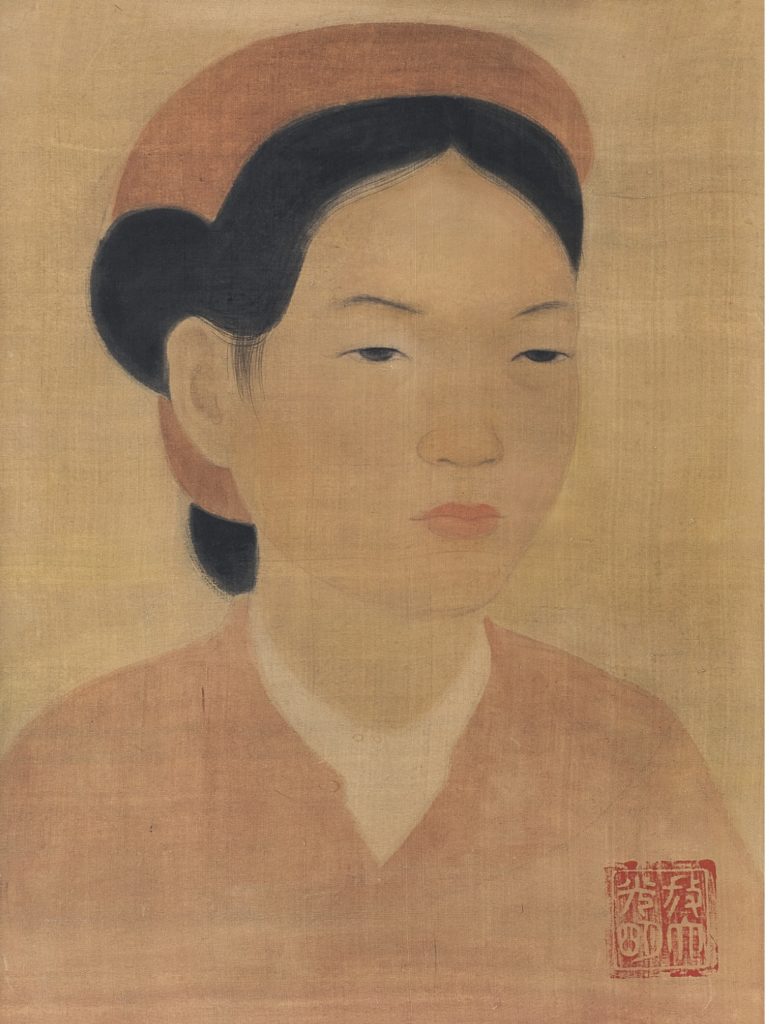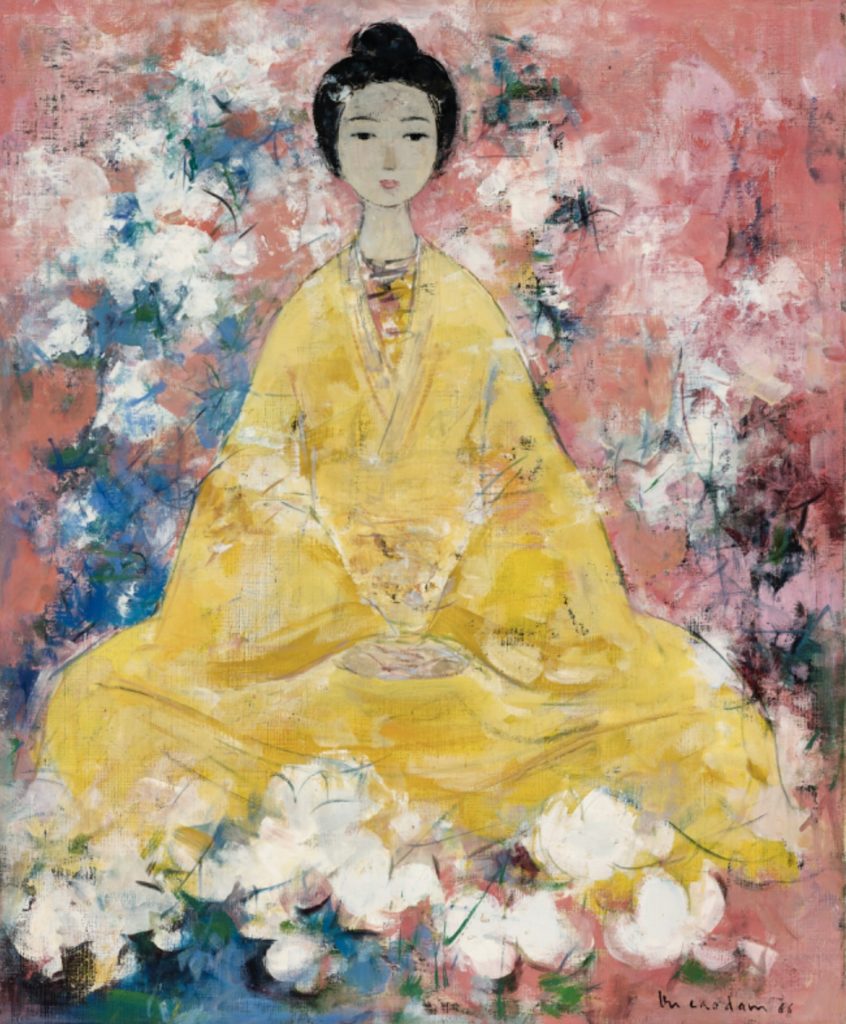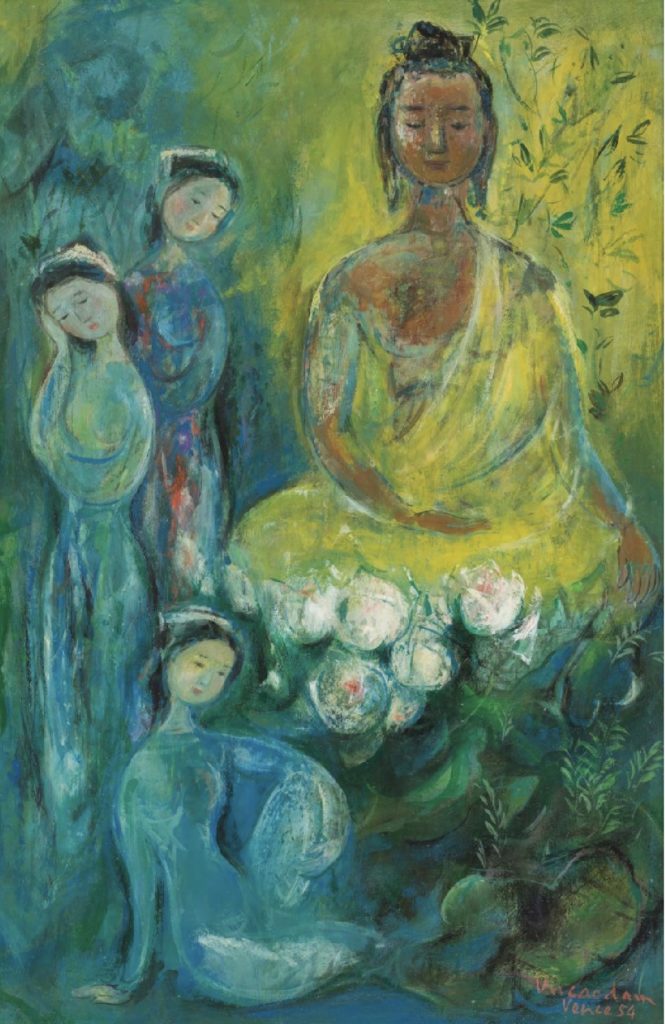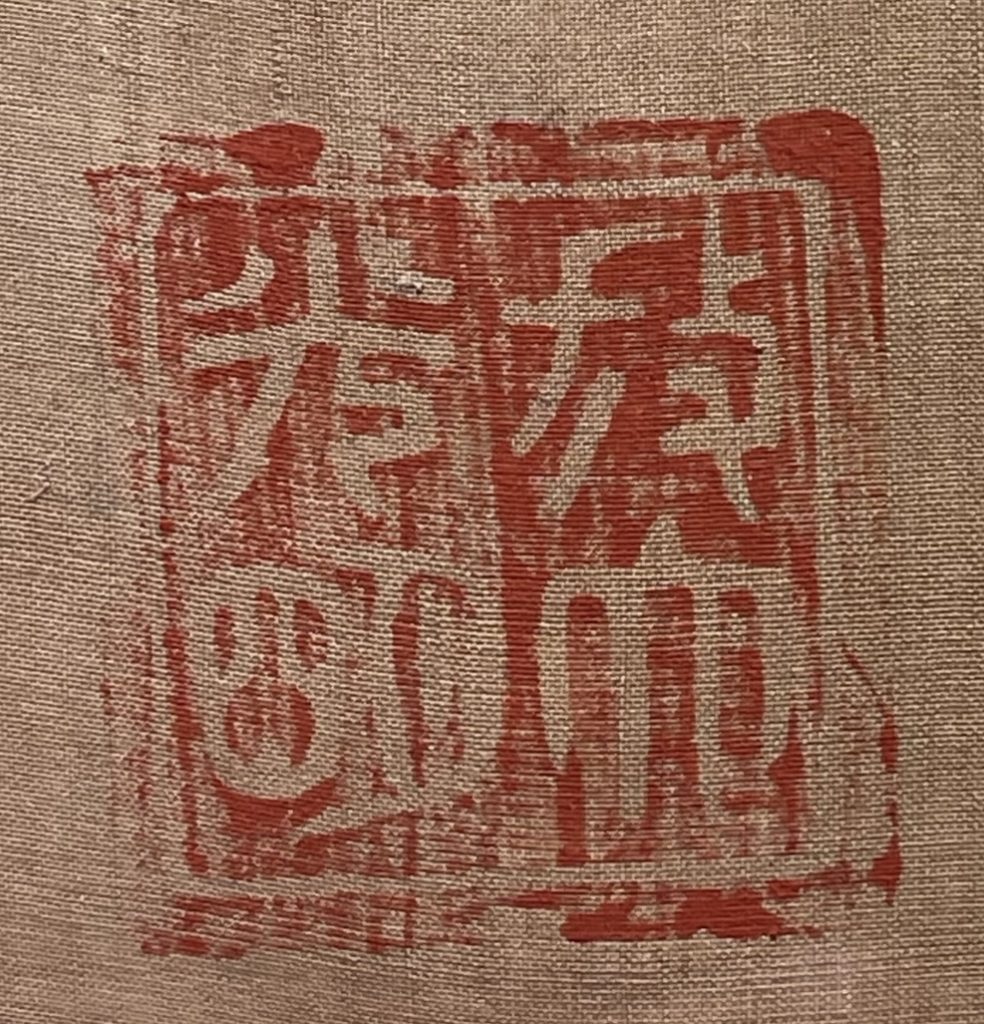Vu Cao Dam, “Bust of a young woman” (circa 1935), or the “sealed meaning” of a work
A soft light radiates from this ink and gouache on silk (38 x 27 cm) executed around 1935.
It shows a beautiful young woman with her Tonkinese headdress, classic modest clothes, bun and particularly soft facial features.

Almost a portrait.
The woman doesn’t look at us. Her gaze, eyes half-closed, looks to her left, in the background.
More contemplative than observant.
But who knows?
The background is left bare. Only the inked arabesque of the hair frames the face.
A large stamp in red ink in Chinese sigillary script at bottom right reads:
放大光明
and can be translated as: “magnify the light“.
Where we would expect a name, a nickname, a poetic evocation, in the tradition of the seal, here we find a vow, almost an injunction.
“Magnify”, “the light”
As if the painter identified himself entirely in this red openwork square.
Two questions stand out:
What was Vu Cao Dam’s state of mind around 1935?
What is the meaning of this stamp?
Let’s sketch out a few possible approaches.
Since his arrival in Paris in December 1931, thanks to a scholarship awarded to him on graduating from the École des Beaux-Arts in Hanoi in June 1931 (in the second class), the artist has devoted himself essentially to sculpture. He traveled to Rome in 1932 and London in 1935. All the world’s arts fascinated him, from the European Renaissance to ancient Egypt, from Hokusaï to Khmer sculpture, from Tang terracottas to Parthenon sculptures. But also the arts of Africa and Oceania. All this via art books, of course, but also through visits to museums. More prosaically, he became friends with Bao Dai, who offered to make him his quasi-official sculptor (if he returned to Vietnam, which he never did).
He also took part in a number of Salons where his silks were exhibited (not far from the works of Alix Aymé)… He exhibited successfully at AGINDO (18 rue de la Boétie, Paris), from 1932. In 1934, the Manufacture de Sèvres produced a bicuit-fired ceramic of a young man’s head of his own composition, very Khmerized. His busts of Colette Reynaud (daughter of Paul, then Minister of the Colonies), in 1932, then of Paul Blanchard de la Brosse, Joseph Paganin, Albert Sarraut and others filled a quasi-worldly repertoire…
In 1935, having lived at the Cité Universitaire since his arrival, he moved to 59 boulevard Jourdan. The following year, he met the absolute love of his life, Renée Appriou, and moved to avenue de Saxe, still in Paris.
In 1935, Vu Cao Dam was recognized, supported and established. At just 27 years of age, you’d be forgiven for little … But all great artists refuse to take the easy way out, and material well-being, in their case, multiplies the introspection that is the foundation of their artistic quest.
With this stamp, is Vu Cao Dam asking religious or secular questions?
“Magnifying light” is certainly one of the roles assigned, in Buddhism, to the bodhisattva, those sages who have crossed all the degrees of perfection except the last one, which would make them a Buddha, if they did not decide to delay this crossing. They renounce their own liberation, out of compassion, to help humanity.
But Vu Cao Dam is not a religious man, but a secular one. He has no vocation to be a bodhisattva. Just the certainty of being an artist.
Of course, later, in Vence in the second half of the ’50s, he would paint “Divinities” that would be seen even more often in his Findlay period, such as this one, painted in 1966 and titled on the back of his hand.

1966 
1954
Fluid, serene, almost ethereal, with narrow shoulders: these are the characteristics of these divinities.
His oil on canvas (61 x 40.5 cm), located and dated Vence 1954, confirms the painter’s desire to depict a peaceful Buddha. His work lacks the quasi-militancy of a Lé Van Dé or the fascination of a Le Pho, who are not interested in Buddhism but in Catholicism.
No, for Vu Cao Dam it’s a secular desire to capture light, to sublimate it. In Vence, he even worried about the effect of the glass that covered his paintings and vitiated their vision. He carried out research to optimize his varnishes.
By putting this singular stamp on his work, Vu Cao Dam defines himself as a painter of reality, but a reality he refuses to see, despite illness, bereavement and war, as Hell.
After all, only Platonists consider a demiurge to be a god…
Jean-François Hubert
